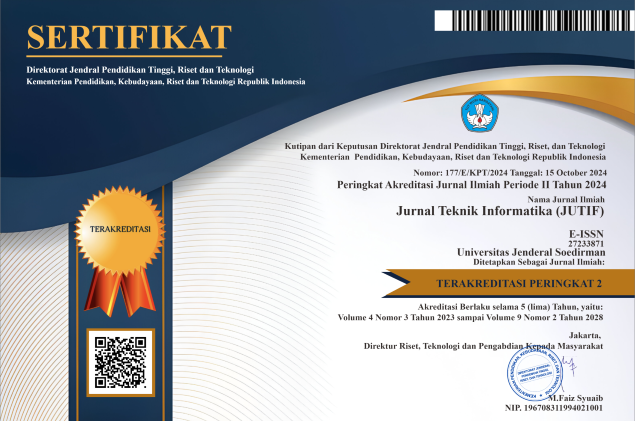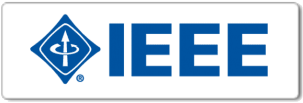COMPARISON OF DBSCAN AND K-MEANS CLUSTER ANALYSIS WITH PATH-ANOVA IN CLUSTERING WASTE MANAGEMENT BEHAVIOUR PATTERNS
DOI:
https://doi.org/10.52436/1.jutif.2025.6.1.4183Keywords:
cluster analysis, DBSCAN, K-Means, Path-ANOVA, waste managementAbstract
This study aims to compare the effectiveness of DBSCAN and K-Means cluster analysis methods in clustering waste management behaviour patterns in Batu City. The data used is secondary data from previous research with a total of 395 respondents taken using the quota sampling method. DBSCAN classifies data based on density with the main parameters epsilon and MinPts, while K-Means uses the average centroid to determine the cluster. The analysis results show that DBSCAN produces a silhouette index of 0.664, which is higher than K-Means with a value of 0.574. DBSCAN also successfully identified noise as much as 10 data that did not belong to any cluster, while K-Means did not have a similar mechanism. The results of Path-ANOVA show that DBSCAN is the most optimal clustering with a more significant partition difference value. Further tests were conducted to strengthen the validation of clustering results using Path-ANOVA. Both methods produced two main clusters, with the second cluster showing higher quality in terms of maintenance, quality, and ease of use of environmental hygiene facilities. This research emphasises the importance of choosing an appropriate clustering method to ensure optimal clustering results, especially in data with complex characteristics.
Downloads
References
Y. S. Afrianti, U. S. Pasaribu, F. H. Sulaiman, G. Angelia, and H. J. Wattimanela, “K-Means And Agglomerative Hierarchy Clustering Analysis On The Stainless Steel Corrosion Problem,” BAREKENG: Jurnal Ilmu Matematika dan Terapan, vol. 18, no. 1, pp. 0589–0602, Mar. 2024, doi: 10.30598/barekengvol18iss1pp0589-0602.
A. Kassambara, Practical guide to cluster analysis in R: Unsupervised machine learning, vol. 1. Sthda, 2017.
I. D. Id, A. Astrid, and E. Mahdiyah, “Modifikasi DBSCAN (Density-Based Spatial Clustering With Noise) pada Objek 3 Dimensi,” Jurnal Komputer Terapan, vol. 3, no. 1, pp. 41–52, 2017, [Online]. Available: http://jurnal.pcr.ac.id
E. T. K. Dewi, A. Agoestanto, and S. Sunarmi, “Metode Least Trimmed Square (LTS) Dan Mm-Estimation Untuk Mengestimasi Parameter Regresi Ketika Terdapat Outlier,” UNNES Journal of Mathematics, vol. 5, no. 1, pp. 47–54, 2016.
T. N. Tran, K. Drab, and M. Daszykowski, “Revised DBSCAN algorithm to cluster data with dense adjacent clusters,” Chemometrics and Intelligent Laboratory Systems, vol. 120, pp. 92–96, Jan. 2013, doi: 10.1016/j.chemolab.2012.11.006.
P. B. Nagpal and P. A. Mann, “Comparative Study of Density based Clustering Algorithms,” Int J Comput Appl, vol. 27, no. 11, pp. 44–77, Dec. 2011, doi: 10.5120/3341-4600.
S. U. Rehman, S. Asghar, S. Fong, and S. Sarasvady, “DBSCAN: Past, present and future,” in The Fifth International Conference on the Applications of Digital Information and Web Technologies (ICADIWT 2014), IEEE, Feb. 2014, pp. 232–238. doi: 10.1109/ICADIWT.2014.6814687.
D. S. Moore and G. P. McCabe, Introduction to the practice of statistics eight edition. WH Freeman/Times Books/Henry Holt & Co., 2014.
D. C. Montgomery, E. A. Peck, and G. G. Vining, Introduction to linear regression analysis. John Wiley & Sons., 2021.
J. F. Hair, W. C. Black, and R. E. Anderson, Multivariate Data Analysis (8th ed.). Pearson Education, 2020.
S. Solimun, A. A. R. Fernandes, I. Rahmawati, R. Isaskar, L. Muflikhah, and F. L. N. Rasyidah, “Cluster Integration Path Analysis to Model PT Pelindo II’s Market Mapping,” International Journal of Circuits, Systems and Signal Processing, vol. 15, pp. 1833–1841, Jan. 2022, doi: 10.46300/9106.2021.15.198.
E. Prasetyo, Data Mining Mengolah Data Menjadi Informasi Menggunakan Matlab. 2014.
A. S. Devi, I. K. G. D. Putra, and I. M. Sukarsa, “Implementasi Metode Clustering DBSCAN pada Proses Pengambilan Keputusan,” Lontar Komput. J. Ilm. Teknol. Inf., p. 185, Dec. 2015, doi: 10.24843/LKJITI.2015.v06.i03.p05.
S. Scitovski, “A density-based clustering algorithm for earthquake zoning,” Comput Geosci, vol. 110, pp. 90–95, Jan. 2018, doi: 10.1016/j.cageo.2017.08.014.
P. N. Tan, M. Steinbach, and V. Kumar, Data mining cluster analysis: basic concepts and algorithms. 2013.
W. Yustanti, “Algoritma K-Nearest Neighbour untuk Memprediksi Harga Jual Tanah,” vol. 9, no. 1, pp. 57–68, 2012.
M. N. M. Ediyanto and N. Satyahadewi, “Pengklasifikasian karakteristik dengan metode K-Means cluster analysis.,” Bimaster: Buletin Ilmiah Matematika, Statistika dan Terapannya, vol. 2, no. 2, 2013.
A. Aljohani, “Optimizing Patient Stratification in Healthcare: A Comparative Analysis of Clustering Algorithms for EHR Data,” Int. J. Comput. Intell. Syst., vol. 17, no. 1, p. 173, Jul. 2024, doi: 10.1007/s44196-024-00568-8.
D. P. Isnarwaty and I. Irhamah, “Text Clustering pada Akun TWITTER Layanan Ekspedisi JNE, J&T, dan Pos Indonesia Menggunakan Metode Density-Based Spatial Clustering of Applications with Noise (DBSCAN) dan K-Means,” J. Sains Dan Seni ITS, vol. 8, no. 2, pp. D137–D144, Feb. 2020, doi: 10.12962/j23373520.v8i2.49094.
M. Hahsler, M. Piekenbrock, and D. Doran, “Fast Density-Based Clustering with R,” J. Stat. Softw., vol. 91, no. 1, 2019, doi: 10.18637/jss.v091.i01.
A. J. Alifah, S. Saepudin, and C. Irawan, “Implementation of the K-Means Clustering Algorithm in Analyzing Public Satisfaction Regarding Public Services (studi Case: Balai Pengujian Standar Instrumen Tanaman Industri Dan Penyegar)”.
Z. Mustofa and I. S. Suasana, “Algoritma Clustering K-Medoids Pada E-Government Bidang Information and Communication Technology Dalam Penentuan Status Edgi,” J. Teknol. Inf. DAN Komun., vol. 9, no. 1, pp. 1–10, Apr. 2020, doi: 10.51903/jtikp.v9i1.162.
D. Adillah, N. Manurung, and A. Dermawan, “Implementation of K-Means Clustering Analysis to Determine Barriers to Online Learning Case Study: Swasta Yapendak Tinjowan Junior High School”.
F. Nurulhikmah and D. N. E. Abdi, “Classification of Foods Based on Nutritional Content Using K-Means and DBSCAN Clustering Methods,” Teknika, vol. 13, no. 3, pp. 481–486, Oct. 2024, doi: 10.34148/teknika.v13i3.1067.
P. A. Escudero, M. C. López González, and J. L. García Valldecabres, “Optimising Floor Plan Extraction: Applying DBSCAN and K-Means in Point Cloud Analysis of Valencia Cathedral,” Heritage, vol. 7, no. 10, pp. 5787–5799, Oct. 2024, doi: 10.3390/heritage7100272.


























